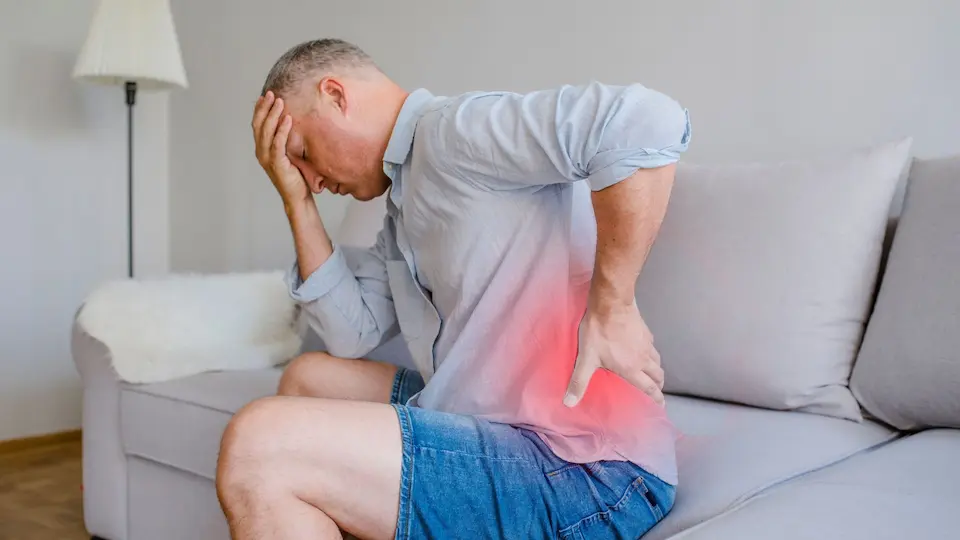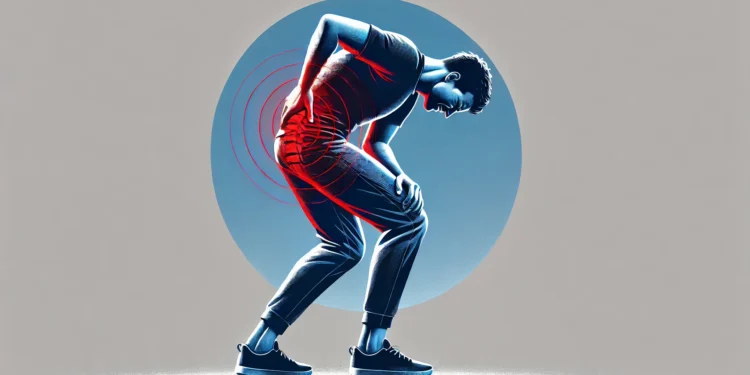Experiencing lower back pain when bending over is a common complaint for many individuals, affecting their daily activities and overall quality of life. This discomfort can range from mild to severe, and it may occur suddenly or develop over time. If you’re dealing with pain when bending forward, understanding its causes, symptoms, and treatment options is essential for effective relief and prevention.
What Causes Lower Back Pain When Bending Over?
Lower back pain when bending over can result from a variety of underlying factors. Here are some of the most common causes:
Read Also: Spiritual Meaning Lower Back Pain: Understanding the Deeper Connections!
- Muscle Strain: One of the leading causes of lower back pain is muscle strain. Overstretching or sudden movements can strain the muscles in the lower back, especially if you’re not properly warmed up or if you engage in heavy lifting.
- Herniated Disc: A herniated or bulging disc occurs when one of the spinal discs in the lower back slips out of place, putting pressure on nearby nerves. This can cause pain that intensifies when bending or twisting.
- Degenerative Disc Disease: As we age, the discs in our spine can wear down, reducing their cushioning ability and causing discomfort, especially when bending forward.
- Poor Posture: Sitting or standing with poor posture can lead to imbalances in the spine, increasing the risk of back pain when bending over.
- Sciatica: Sciatica occurs when the sciatic nerve, which runs from the lower back down to the legs, becomes irritated. Bending over or certain movements may worsen the pain associated with sciatica.
- Spinal Stenosis: This condition refers to the narrowing of the spinal canal, which can compress the spinal cord or nerves, leading to pain when bending forward.
- Sacroiliac Joint Dysfunction: Dysfunction in the sacroiliac joint (located where the spine meets the pelvis) can cause lower back pain that worsens with movement, including bending.
- Osteoarthritis: Osteoarthritis can affect the spine, leading to inflammation, stiffness, and pain when bending or engaging in physical activity.
Symptoms of Lower Back Pain When Bending Over
The symptoms of lower back pain when bending forward can vary depending on the underlying cause, but common signs include:
- Localized Pain: Pain concentrated in the lower back that increases when bending or reaching forward.
- Radiating Pain: Pain that extends to the legs or buttocks, especially with conditions like sciatica or a herniated disc.
- Stiffness: A feeling of tightness or stiffness in the lower back, making it difficult to bend or move freely.
- Numbness or Tingling: In some cases, nerve compression can lead to sensations of numbness or tingling in the legs or feet.
- Pain When Sitting or Standing: The pain may worsen when sitting for long periods or standing in one position.
When to Seek Medical Help

While lower back pain when bending over is often due to benign causes like muscle strain, it’s important to seek medical attention if:
- The pain is severe and persists for more than a few days.
- You experience numbness, tingling, or weakness in your legs.
- The pain is accompanied by bladder or bowel control issues.
- You’ve recently experienced an injury or fall.
How to Treat Lower Back Pain When Bending Over
Treatment for lower back pain when bending depends on the cause of the pain and its severity. Here are some common approaches:
- Rest and Activity Modification: If your pain is due to muscle strain, rest and avoid activities that aggravate the pain. However, avoid prolonged bed rest, as this can worsen stiffness.
- Heat and Cold Therapy: Applying ice or a cold compress can reduce inflammation, while heat therapy helps relax tight muscles. Alternating between heat and cold can provide optimal relief.
- Physical Therapy: A physical therapist can guide you through exercises designed to strengthen your back muscles, improve flexibility, and alleviate pain. Core-strengthening exercises are particularly beneficial for lower back pain.
- Posture Improvement: Practicing good posture when sitting, standing, and walking can help prevent strain on your back and reduce pain when bending over.
- Chiropractic Care: Chiropractors can use spinal adjustments to improve alignment and relieve pressure on nerves, providing pain relief in some cases.
- Injections or Surgery: For severe or persistent cases caused by conditions like herniated discs or spinal stenosis, steroid injections or even surgery may be required to address the underlying issue.
Preventing Lower Back Pain When Bending Over
There are several steps you can take to reduce your risk of developing lower back pain when bending over:
- Practice Proper Lifting Techniques: When lifting heavy objects, always bend at the knees (not at the waist) and use your legs to lift, rather than your back.
- Exercise Regularly: Strengthening the muscles in your back, abdomen, and legs can provide better support for your spine.
- Maintain Good Posture: Make sure your spine is properly aligned, whether you’re sitting, standing, or walking.
- Stay Active: Avoid sitting or standing for extended periods. Taking breaks to stretch and move around can help maintain flexibility and reduce stiffness.
- Wear Supportive Shoes: Shoes with proper arch support can reduce strain on your lower back.
FAQs:
1 What causes lower back pain when bending over?
It can be caused by muscle strain, herniated discs, degenerative disc disease, sciatica, or poor posture.
2 How can I relieve lower back pain when bending over?
Treatments include rest, heat and cold therapy, physical therapy, and pain-relieving medications.
3 When should I see a doctor for lower back pain?
If the pain is severe, lasts for more than a few days, or is accompanied by numbness or weakness in the legs, see a doctor.
4 Can poor posture lead to lower back pain when bending over?
Yes, poor posture can strain the spine, leading to discomfort or pain when bending.
5 How can I prevent lower back pain when bending over?
Maintain good posture, exercise regularly, practice proper lifting techniques, and avoid prolonged sitting or standing.
Conclusion:
Lower back pain when bending over is a common condition that can be caused by a variety of factors, including muscle strain, herniated discs, poor posture, or spinal issues. While this pain can often be managed with self-care techniques like rest, exercise, and heat or cold therapy, it’s important to seek medical advice if the pain is severe or persistent. By understanding the causes and treatment options for lower back pain, you can take steps toward relieving the discomfort and preventing future episodes. If you’re struggling with back pain, don’t hesitate to consult a healthcare professional for personalized guidance.











